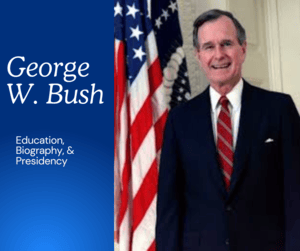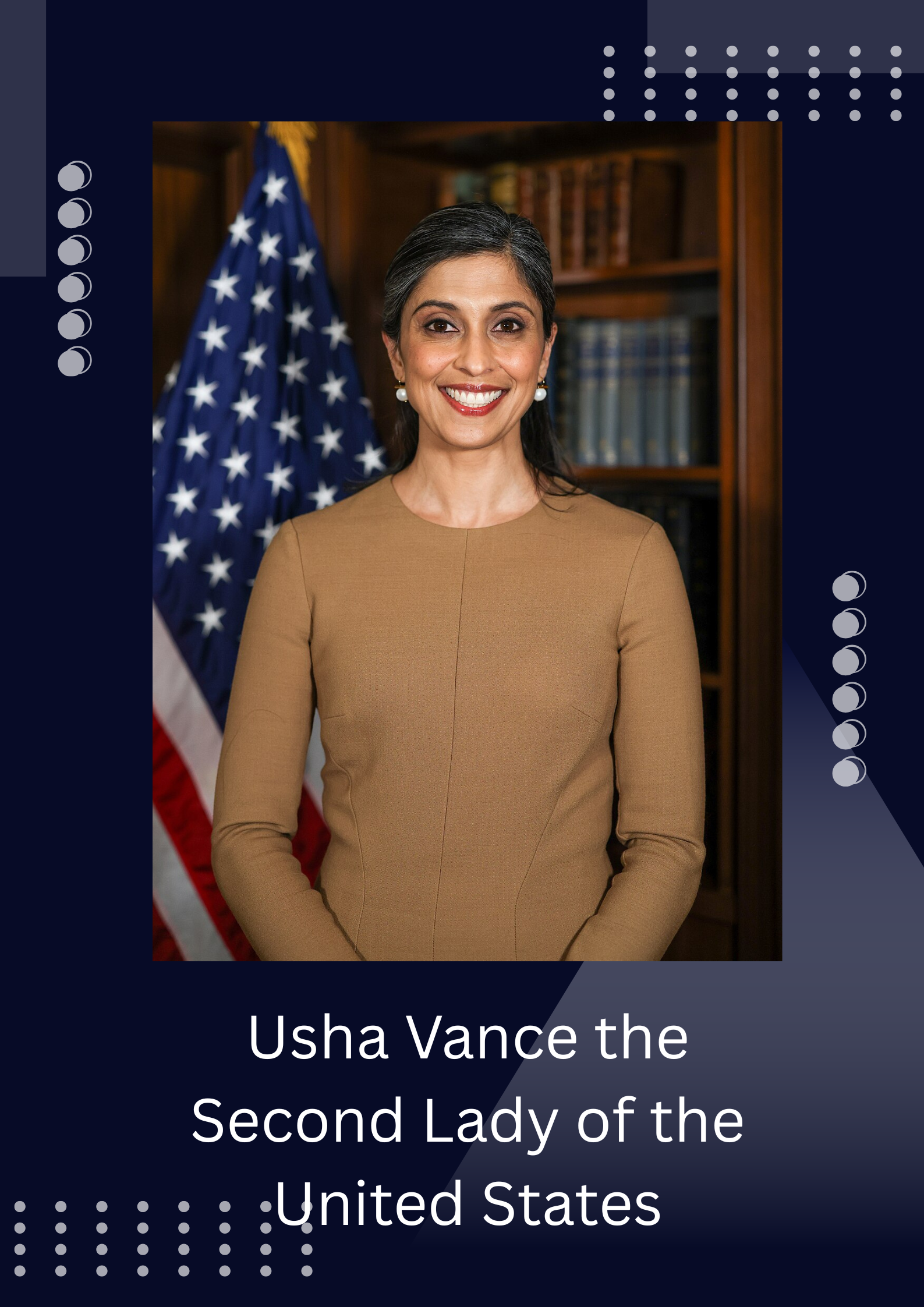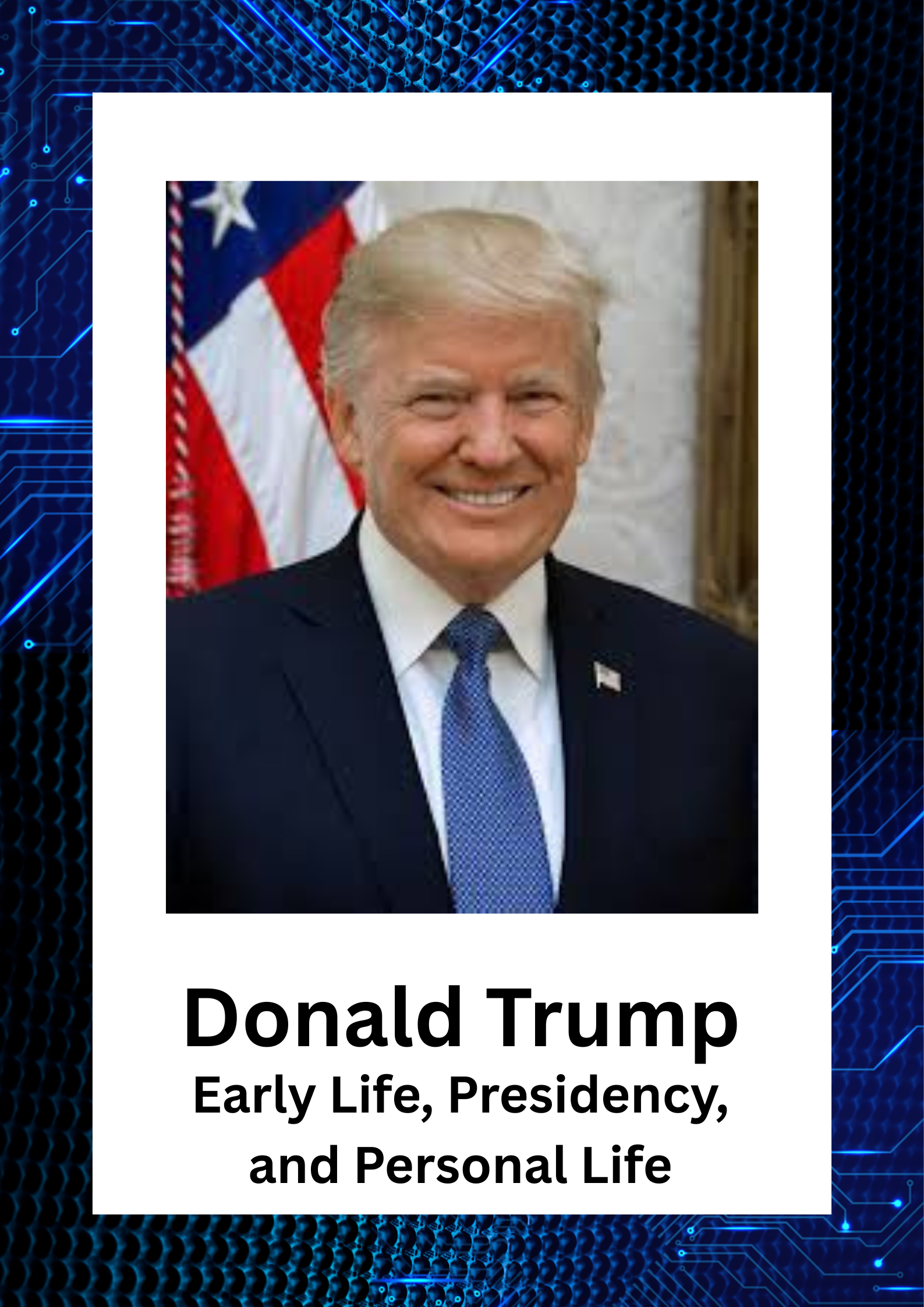George W. Bush was the 43rd President of the United States, serving from 2001 to 2009. As the son of former President George H. W. Bush, he followed in his father’s footsteps and became a key figure in American politics. Known for leading the country through major events like the 9/11 attacks and the War on Terror, Bush’s time in office was marked by both challenges and important decisions.
In this blog, we will explore his early life, presidency, personal values, and the legacy he left behind.
Table of Contents:
- Early Life and Education of George W. Bush
- Early Career of George W. Bush
- Political Career of George W. Bush
- Presidency of George W. Bush (2001–2009)
- Post-Presidency of George W. Bush
- Conclsion
Early Life and Education of George W. Bush
George W. Bush was born on July 6, 1946, in New Haven, Connecticut. He is the oldest son of George H. W. Bush, who also became a U.S. president, and Barbara Bush. George grew up in a big family with five brothers and sisters. Most of his childhood was spent in Texas.
He went to school in Texas and later attended a boarding school called Phillips Academy in Massachusetts. After high school, he studied at Yale University. Later, he went to Harvard Business School and earned an MBA (Master of Business Administration). He is the only U.S. president to have an MBA degree.
As a young student, George was friendly and liked sports. He wasn’t the top of his class, but his school years helped him learn leadership and confidence.
Early Career of George W. Bush
George W. Bush was a Texas Air National Guard pilot during the Vietnam War. After that, he worked in the oil business in Texas. In the 1980s and early 1990s, he helped own a baseball team called the Texas Rangers.
After finishing school, George W. Bush started working in the business world. He moved back to Texas and began working in the oil industry. He started a few small oil companies and learned how to run a business, even though some of the companies didn’t do very well.
George also became interested in politics, like his father. He helped with his father’s presidential campaign and learned a lot about government and leadership. These early jobs and experiences helped prepare him for his future in politics.
Political Career of George W. Bush
George W. Bush began his political journey when he was elected Governor of Texas in 1994. At the time, this was a significant win because he defeated the popular Democratic governor, Ann Richards. As governor, Bush focused on education reform, improving the performance of public schools, and pushing for tax cuts to boost the economy. He was seen as a “compassionate conservative” who aimed to improve government while still keeping it small.
Due to his popularity and the success of his policies, he was re-elected in 1998 by a wide margin, becoming the first Texas governor to serve two consecutive four-year terms.
In 2000, Bush decided to run for president as the Republican nominee. His main opponent was Democrat Al Gore, who was Vice President under Bill Clinton. The 2000 presidential election was one of the closest in U.S. history. The outcome depended on who won the state of Florida, where the vote was extremely tight and controversial. After a series of legal battles and recounts, the U.S. Supreme Court stopped the recount, effectively giving Bush the victory.
As a result, George W. Bush became the 43rd President of the United States, beginning his term in January 2001.
Presidency of George W. Bush (2001–2009)
Key Events and Policies:
- 9/11 Attacks (2001): The Terrorist attacks on the World Trade Center and the Pentagon defined his presidency.
- War on Terror: The wars in Afghanistan (2001) and Iraq (2003) were launched.
- USA PATRIOT Act: Expanded government surveillance powers.
- Hurricane Katrina (2005): Criticized for slow federal response to the disaster.
- 2008 Financial Crisis: Oversaw a large federal bailout to stabilize the economy.
Domestic Policies:
- Tax cuts: He signed major tax cuts into law in 2001 and 2003.
- Education: The No Child Left Behind Act was passed, focusing on standardized testing and accountability.
- Medicare Expansion: Created a prescription drug benefit under Medicare (Part D).
Post-Presidency of George W. Bush
After leaving the White House in January 2009, George W. Bush returned to private life in Texas, settling in the city of Dallas. Unlike some former presidents who stay active in politics, Bush chose to stay mostly out of the spotlight, focusing on personal interests and charitable work.
In 2010, he published his memoir titled Decision Points. In the book, he reflected on major decisions during his presidency, such as the response to the 9/11 attacks, the wars in Iraq and Afghanistan, and the financial crisis of 2008. It gave readers insight into his thinking and leadership style.
In 2013, Bush opened the George W. Bush Presidential Center at Southern Methodist University in Dallas. The center includes his presidential library and museum, as well as a policy institute that promotes leadership, economic growth, and freedom around the world.
In his post-presidency, Bush also developed a strong interest in painting. He began painting portraits of world leaders and later focused on military veterans, honoring their service through art. He published books featuring his paintings, such as Portraits of Courage.
Additionally, he has worked to support veterans and wounded warriors, participating in programs that help them transition to civilian life and receive medical care.
Conclsion
George W. Bush served as the 43rd President of the United States during some very challenging times. He led the country after the 9/11 attacks and made big decisions to keep America safe. Some people agreed with his choices, while others did not, but he always tried to do what he thought was right. Even after his presidency, George W. Bush stayed active in public life and focused on helping others through charity work. Today, many people remember him for his strong leadership and dedication to his country.











Leave a Reply